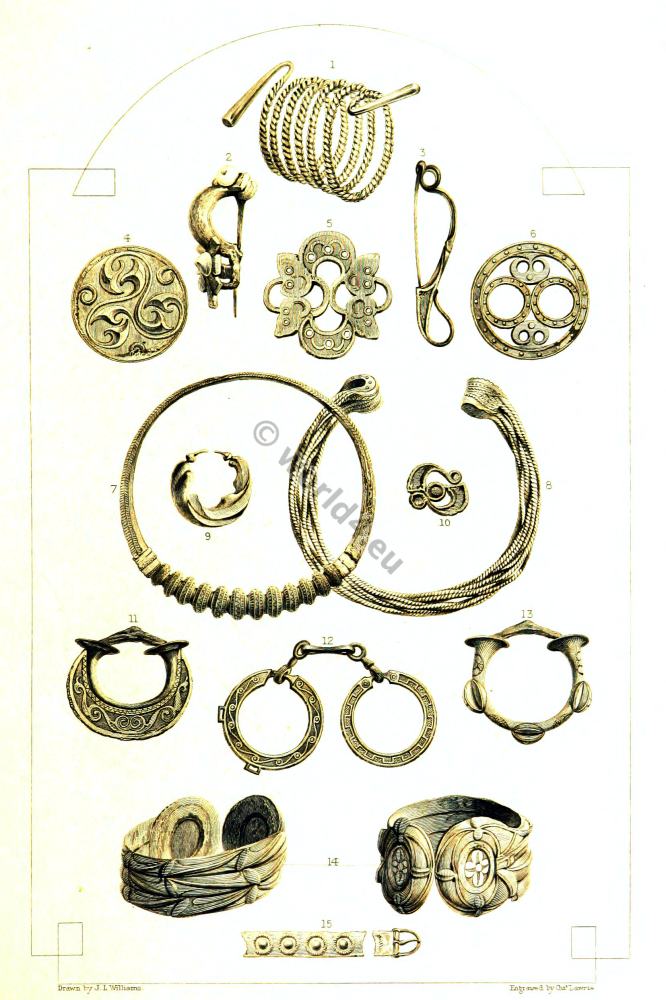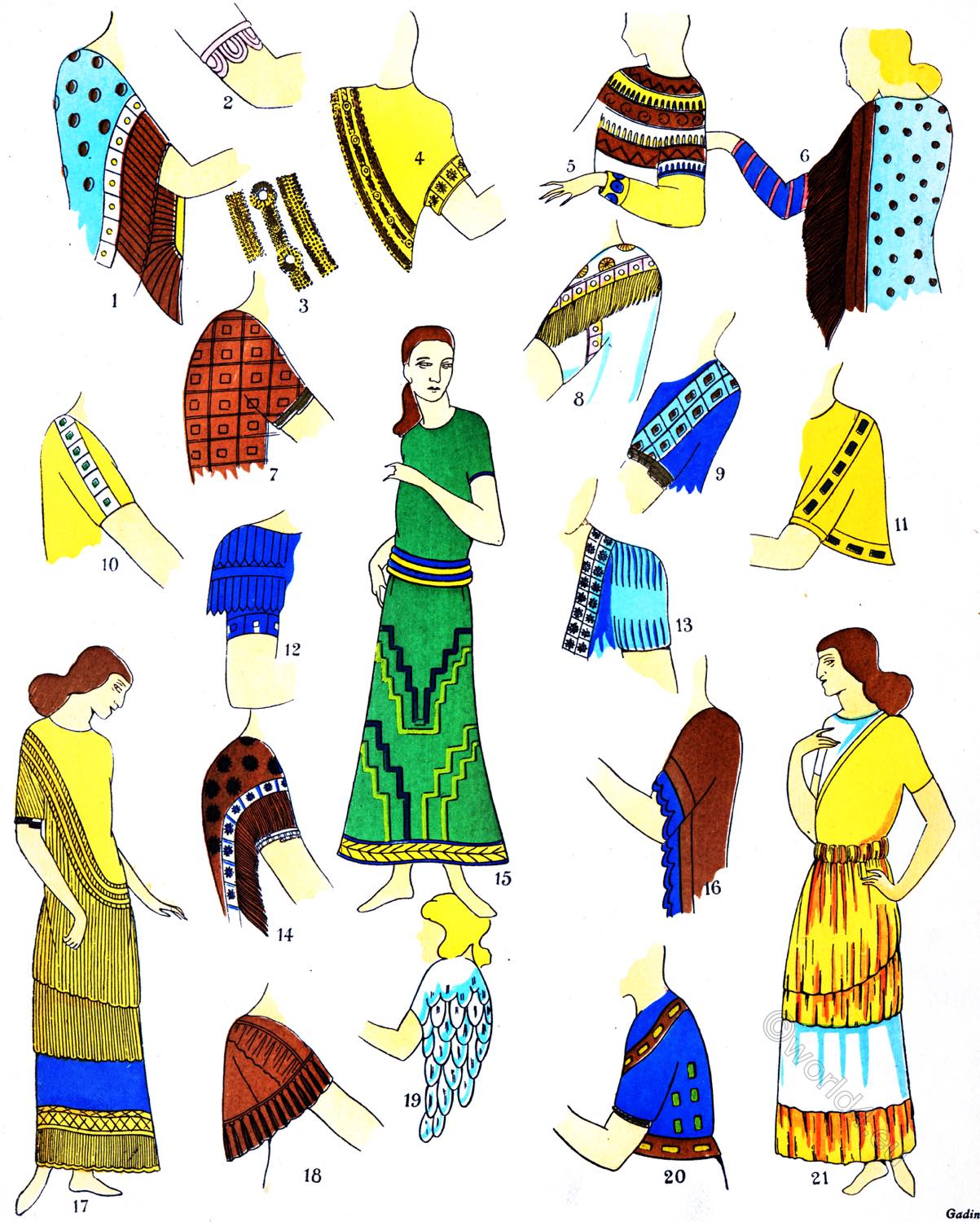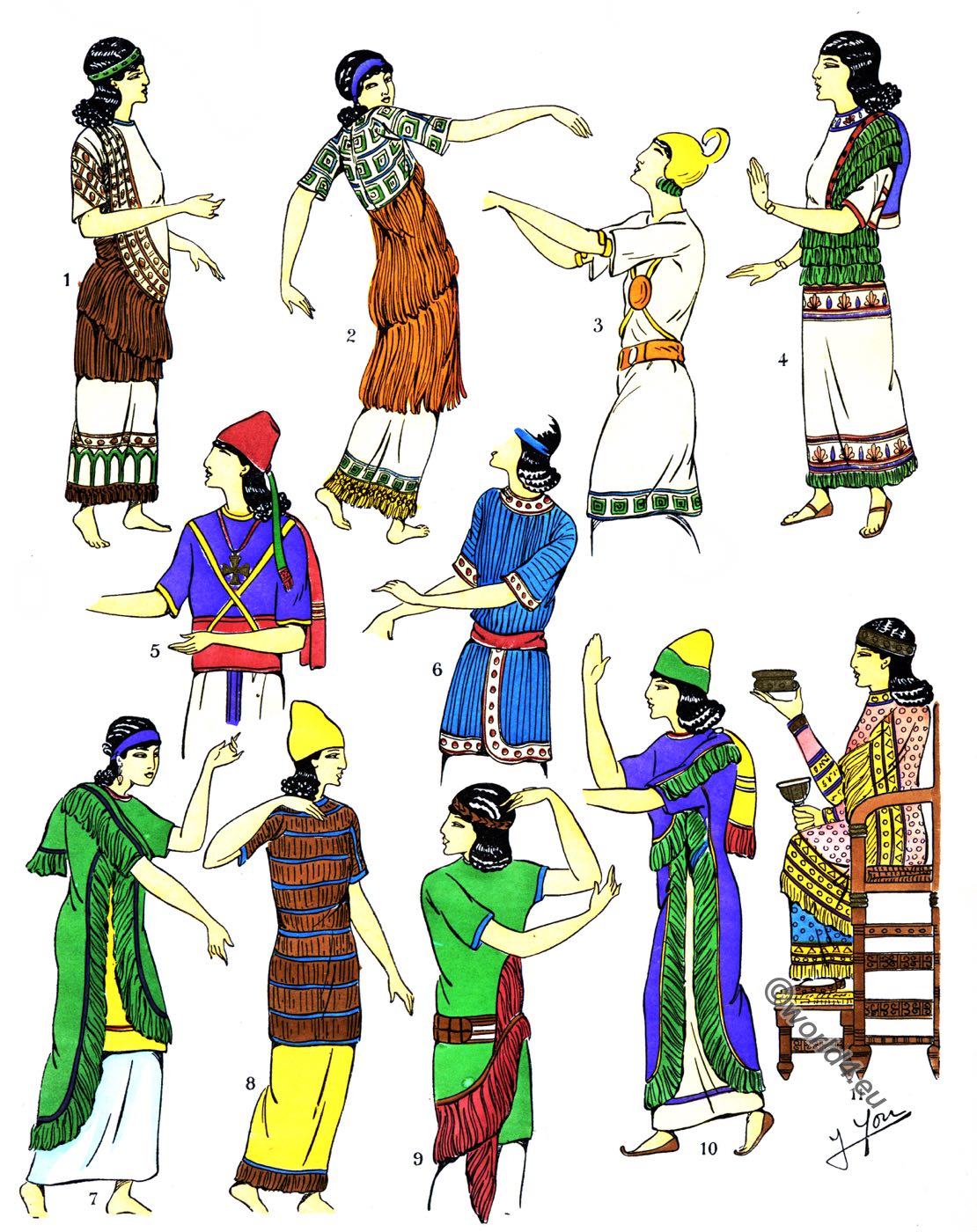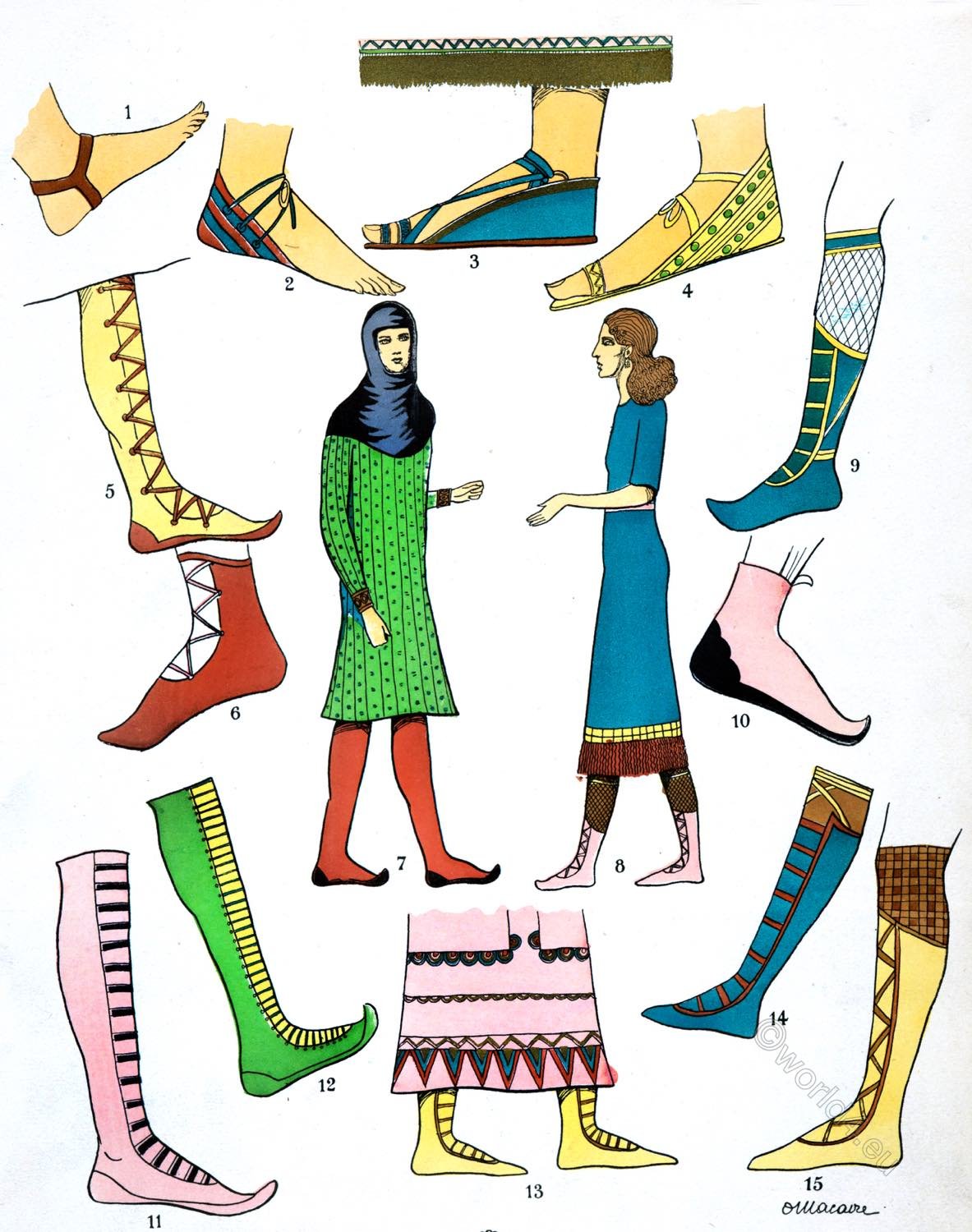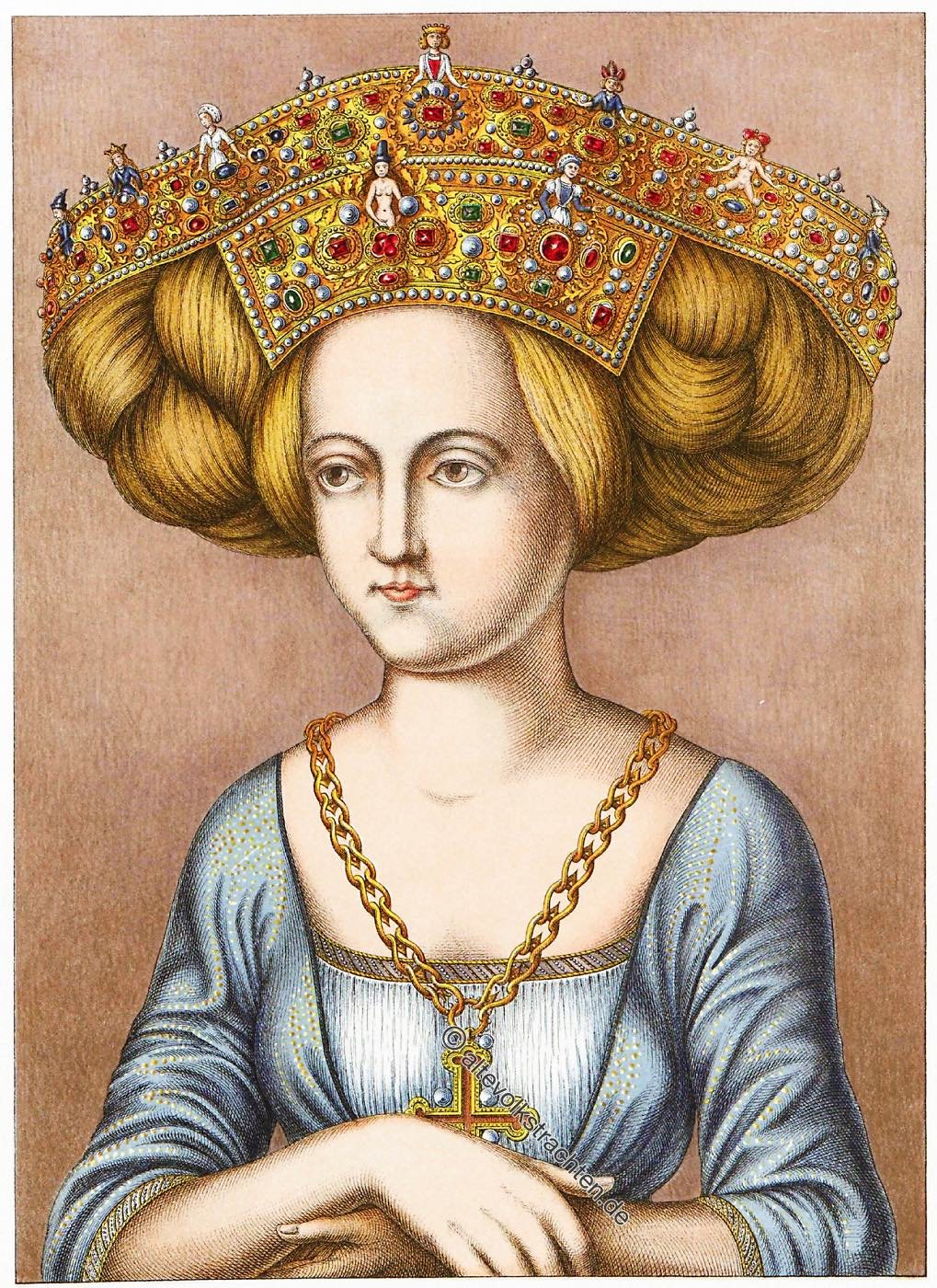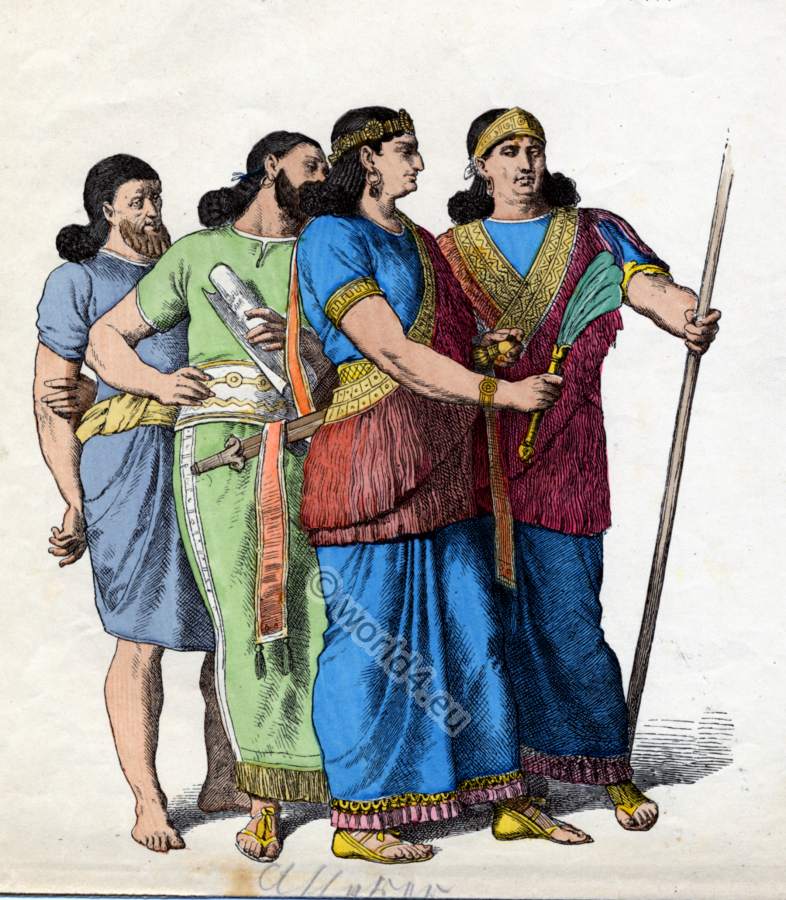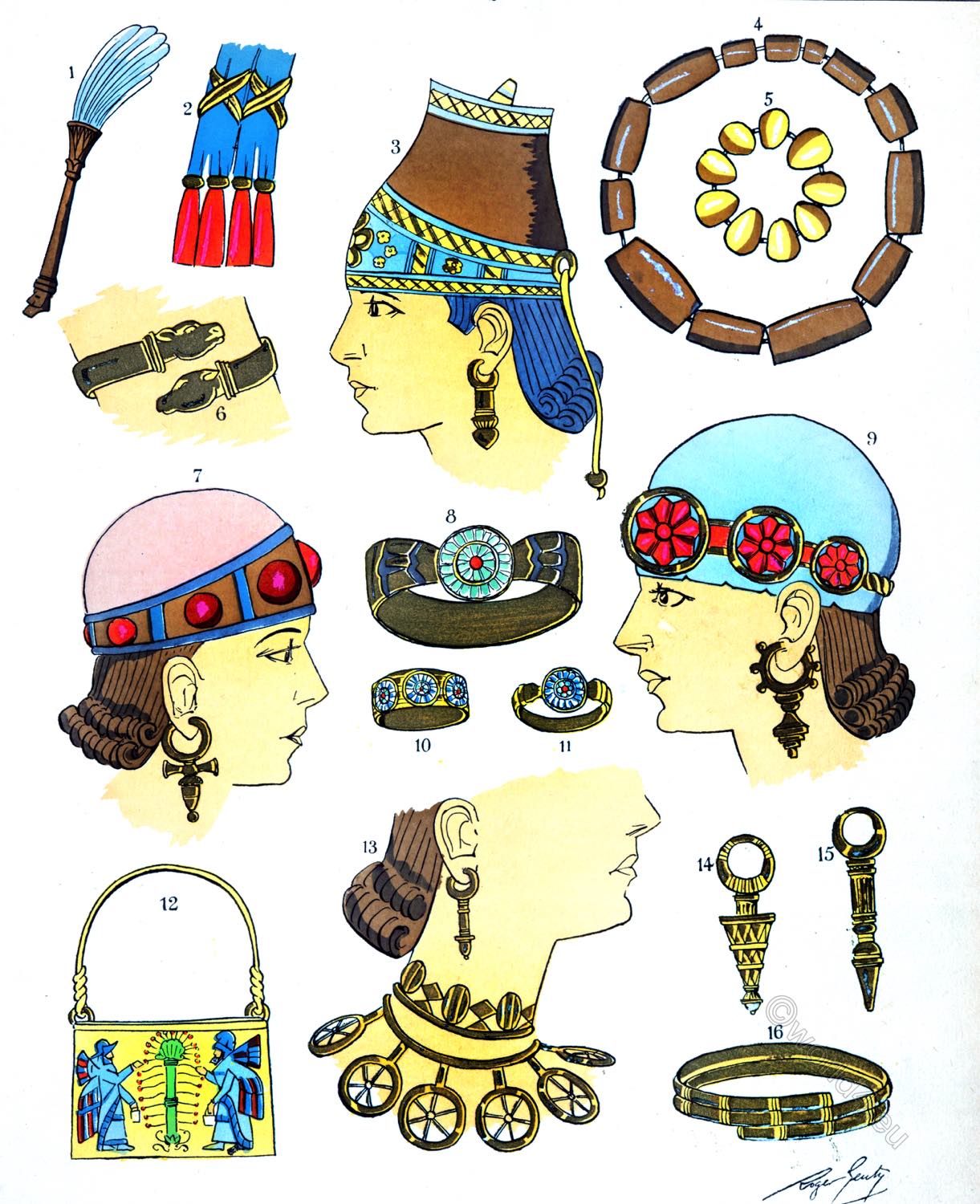
The Luxurious Assyrian Costumes.
Jewels, Adornments.
Part V. Assyrian Plate 10.
- Fly-flap, carved and colored wooden handle. Colored feathers.
- Belt-pendant with gilt metal ornaments.
- Assyrian princess’s coiffure with principal motif forming a diadem. Very tall crown enriched with various ornaments: flowers, gold lattice-work. Ear-rings of chiseled gold.
- 5. Irregular brown and yellow cornelian necklaces.
- Gold bracelet of a single piece ending in animals’ heads.
- Diadem of stuff and gems. Chased gold earings.
- Gold bracelet with central ornament of different-colored gems: rubis, sapphires, emeralds.
- Diadem of precious metal forming large diminishing flowers. Chased gold ear-rings.
- Gold ring with central ornament forming flowers in colored stones.
- Ring like the preceding one, but with the central ornament repeated all round the finger.
- Noble lady’s bag, sort of ornamented basket representing a typical Assyrian scene: angels gathering fruit.
- Gold necklace in two parts, one tightly binding the neck and the other hanging lightly; the former has tight and rigid links, the latter larger and more elastic links resembling chariot wheels. Chased ear-rings.
- Chased gold ear-rings differently composed. The one (14) is a short, squat and rich model; the other (15) a slender and very simple model, more elegantly chased.
Trinkets.
TRINKETS. – Besides domestic articles, and articles of attire, the Phoenicians also manufactured all kinds of knick-knacks and trinkets. They were the fore-runners of what are now best described as “articles de Paris”; chiselled caskets, alabaster ointment boxes, powder-boxes, perfume Basks, gold chains, amber chains, innumerable wood and ivory ornaments (greatly beloved of Jewish women), and pendants and amulets of all descriptions.
BRACELETS. – Symbolical figures on bas-reliefs bear some remarkable ornaments. Round stones, small and big alternately. ending in a sphere which carries in front the reproduction of a flower somewhat like a small lily, form a necklace. The appearance of the stones forming the end of this neck ornament is not unlike that of a divided pomegranate.
On the wrists are rich gold-yellow bracelets, ornamented, inside and out, with a double rosette on their triple ring. Other bracelets fit the arm near to the elbow, and consist of a double spiral making two complete turns; they seem to have been made of metal threads, not entwined, but side by, side speaced apart, and united by other threads surrounding them.
The bracelets worn round the wrists are also made of bund- les of thread, but are not in spirals; they are circles broken by the introduction of lions’ heads, muzzle joined to muzzle.
EARRINGS. – These are fairly simple in design and seem to have been much used by the Assyrians. Their usual shape is that of the cross with a curved bar employed by the Egyptians, and is always composed of a ring from which hangs a straight piece more or less ornamented; the bar is of various shapes and is borne either by the stem or by the ring itself.
FLY WHISKS. – These seem to have been considered in the East, like the parasol, one of the attributes of Royalty, and finished at the bottom in a lion’s head; above it was spread out like a flower in many sharp petals, similar to that so often seen in the hands of the Kings and other persons. From this flower springs out a bunch of feathers.
FILLETS. – The fillets that women carried in their hands were wider at the bottom than at the top. They were completed by a red fringe. They were double, or rather divided in two, forming a fold which was held by the thumb.
Others were composed of a ring on each side and three little drops, the stem being practically fusiform, and but little ornamented.
GOLD. – Gold was abundant in Assyria. Local dynasties were rich and relatively numerous, and many forced gifts were obtained from Kings and Rulers of other nations (Greece, for example), and leave many traces for the historian.
INLAID GOLD RINGS. – These were already well known, but of rare occurrence in the excavations of Tello and de Sarzec *). The only specimen that M. de Sarzec found himself was a thin metal sheet, without any ornamentation at all, the curvature of which, as well as nail holes in its four corners, show that it had been nailed to a cylindrical stem.
*) Sarzec, M. de Ernest, 1836-1901) (full name Gustave Charles Ernest Chocquin, since 1880 de Sarzec; 11 August 1832 in Rennes; – 31 May 1901 in Poitiers) was a French diplomat and archaeologist. He is considered the discoverer of the Sumerian culture.
RINGS. – The most usual form of ornament was the wide ring, made of a single Bat piece between two protruding bezels. A system of inlaying brings together on a gold foundation cornaline and lapis-lazuli strips, which by reason of the contrast of the bright red and blue make a brilliant polychrome design.
Simple designs are usual on the rings; the centre bears a succession of four petalled flowers, some regular, some curiously asymmetrical, together with a third motif composed of two small ellipses slightly irregular in shape.
Continuing
Discover more from World4 Costume Culture History
Subscribe to get the latest posts sent to your email.

